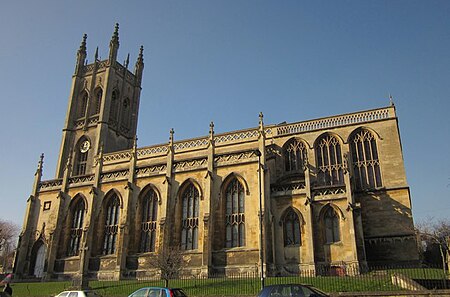St Saviour's Church, Bath

St Saviour's Church is a Church of England parish church in Larkhall, Bath, Somerset England. The church was founded by Archdeacon Charles Moysey in 1824 following the Church Building Act 1824. St Saviour's is one of three Commissioners' churches in Bath and one of six hundred nationally.The church was constructed between 1829 and 1832 probably by architect John Pinch the younger based on a design by his father, John Pinch the elder. The church was later expanded in 1882 when a chancel was added by architect C.E. Davis.The church's crypt was opened in 1832. In October 1832, Rear-Admiral Volant Vashon Ballard was the first person to be interred in the crypt. More than 200 people were buried at the church before the burial grounds were closed in 1891. Subsequent burials took place in Locksbrook Cemetery until 1937.The church is currently led by The Reverend Michael Norman who has been rector since 1998.
Excerpt from the Wikipedia article St Saviour's Church, Bath (License: CC BY-SA 3.0, Authors, Images).St Saviour's Church, Bath
Holland Road, Bath Larkhall
Geographical coordinates (GPS) Address External links Nearby Places Show on map
Geographical coordinates (GPS)
| Latitude | Longitude |
|---|---|
| N 51.3958 ° | E -2.3465 ° |
Address
Saint Saviour's Church
Holland Road
BA1 6SD Bath, Larkhall
England, United Kingdom
Open on Google Maps







